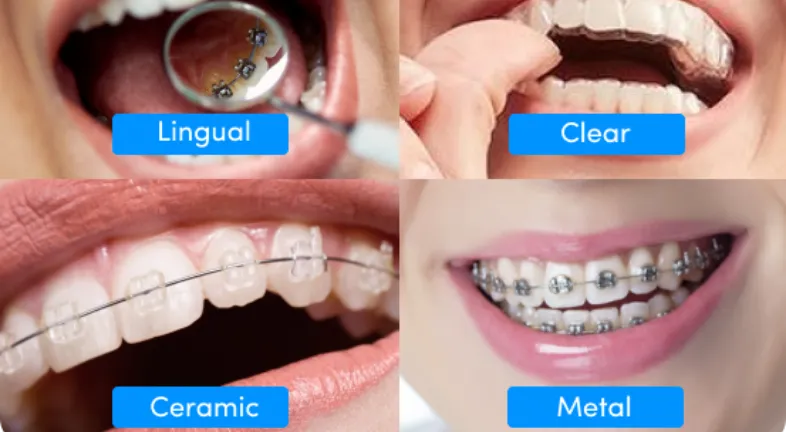
Clear aligners have turned out to be a better option than traditional braces for those who want to achieve a better bite and aesthetic appearance of their teeth. They are unnoticeable, removable, and have the possibility to give good results for most people. However, like all orthodontic treatments, they come with different side effects – one of the most common being that some people experience sensitivity in their teeth. Clear aligners can provide an incredible solution for patients for teeth straightening, but sometimes they can cause sensitivity. Now let’s talk about what leads to the sensitivity of the teeth and how to maintain comfort during the clear aligner treatment process.

Dental sensitivity is described as a sharp, short pain that arises from your teeth to certain stimuli such as cold, heat, pressure, or particular food and beverages. Most of the users of clear aligners develop sensitivity during their treatment, particularly if they adjust from one aligner to the next. But why does this happen?
This sensitivity is usually short-lived and tends to decrease after a few days with each new aligner. However, it can be uncomfortable, so finding ways to manage it is important for a smoother treatment journey.
It must be noted that levels of sensitivity to clear aligners do vary from one person to another. In fact, sensitivity levels can vary greatly depending on a few key factors:
If you’re dealing with sensitive teeth while using clear aligners, don’t worry as there are useful and efficient solutions to ease the discomfort. Here are some tried and recommended tips for reducing dental sensitivity:
You can also have sensitivity from using normal toothpaste and even from eating and drinking. You need toothpaste for sensitive teeth specifically as these toothpaste contain additives like potassium nitrate or stannous fluoride that decrease the impact on teeth directly, calm the nerves, and mitigate the discomfort gradually over time.
A soft-bristled toothbrush has softer bristles compared to the standard toothbrushes and does not exert much pressure on the teeth and gums. Your enamel is weakened by the hard bristles of toothbrushes which causes sensitivity and this actually leads to further sensitivity during clear aligners treatment.

Extreme temperature changes can trigger sensitivity when your teeth are already feeling tender from the pressure of aligners on the teeth. We suggest avoiding hot and cold foods for sensitive teeth in the first few days after, especially when switching trays so it can help prevent sudden discomfort.
If you or any of your teeth or gums are sensitive to cold or have swollen, using a cold compress will help in that area to numb and reduce inflammation. Cold compresses are most effective when used right after the aligner change because people are most uncomfortable at that time.
One common technique to minimize discomfort when switching aligner trays is to start wearing them at night. This allows you to sleep through the first few hours of adjustment, which is when discomfort and sensitivity are usually at their highest.
It is advisable to avoid hard or crunchy foods that can exacerbate sensitivity during the initial days of wearing a new aligner. Sticking to softer foods can help minimize discomfort.
Dental sensitivity is rarely permanent, especially with clear aligners and it is usually triggered only in the initial days of wearing a new tray. Additionally, the period of sensitivity may be different due to the difference in the pain threshold as well as the speed of tooth movement, as well as care techniques that help control it.
The first few days when a person changes from one aligner tray to the other is normally when they feel the most irritated. In these initial days, there is every possibility to feel sensitivity which can be described as a sharp, throbbing, or aching feeling while swallowing food and drinks.
Sensitivity usually subsides following the first several days’ use of every new tray; however, some individuals continue to notice minor discomfort during their entire treatment. It is normally treatable when there are specific care measures taken against something similar like using toothpaste for sensitive teeth, getting a dental checkup, and being conscious about what one eats.

Managing dental sensitivity during clear aligner treatment is often a balance of good habits and gentle care of the teeth. Here are some more tips that can make the entire treatment journey smoother:
If sensitivity becomes particularly too unbearable for you, over-the-counter pain relievers, such as ibuprofen or acetaminophen will be of great help. But it’s better to consult with a dentist or orthodontist before going for such pain relievers. These medications will reduce inflammation and will provide you with some relief, especially during the first few days after switching to a new tray.
If you have salt water you can try gargling it to ease your sore gums plus the irritation you may be experiencing. This rinse is also a basic and effective solution for anyone going through aligner treatment and facing higher sensitivity of their gums.
One can also avoid the formation of plaque which leads to worsening of sensitivity due to inflammation of gums and teeth. If you want to be comfortable when undergoing a clear aligner treatment then it is very important to maintain oral hygiene.
Use of clear aligners may cause mild sensitivity, but prolonged or severe discomfort should not be ignored. No discomfort or pain should persist for more than a few days with each new aligner tray, or become progressively worse, in which case it’s wise to contact your dentist or orthodontist.
Sensitivity may be an indication of problems such as enamel erosion, cavities, or ill-fitting aligners. Sometimes your dentist may modify the discussed treatment plans or suggest extra preventive steps.
Continued sensitivity to hot or cold can be addressed by the dentist with topical applications of fluoride, the usage of desensitizing paste or gel, or alterations made to the aligner trays to guarantee a proper fit.
Clear aligners are an excellent choice for achieving a straighter smile, but managing sensitivity can be a key part of a comfortable treatment experience. While it’s common to experience some discomfort, especially with each new tray, small changes to your routine can help you handle it. From using sensitive toothpaste and soft-bristled brushes to rinsing with salt water and choosing soft foods, these methods help ease discomfort and make the process easier.




Curated the best for your knowledge
 Teeth Alignment: Methods, Benefits & What to Know
Teeth Alignment: Methods, Benefits & What to KnowLet’s be real, a straight smile has never been more trendy. Whether it's scrolling through TikTok or looking through celebrity selfies, it is not hard to find an example of someone chasing a moment with perfect teeth alignment. But teeth alignment affects much more than just how you look; it affects how you chew, how you speak, and can even affect how your face shapes over time. Getting your teeth aligned has become faster, better, and less painful than ever. No more heavy metal braces taking over your smile for years! Today, technological aspects of teeth correction are virtually invisible, oftentimes done at home! So, let's get started. What is proper teeth alignment anyways? Why does it matter so much, and how can today's leading brands like Caspersmile, Invisalign, and Smile White help you?
Read More What Are Dental Veneers? Cost, Procedure & Benefits
What Are Dental Veneers? Cost, Procedure & BenefitsEver wonder how some people have that perfectly even, white smile, like it just belongs in a toothpaste ad? Most of the time, it’s not just good genetics or lucky whitening strips. It’s veneers. Dental veneers have become one of the most popular cosmetic treatments in dentistry, and honestly, it’s not hard to see why. They’re basically thin shells that sit on top of your teeth to fix things like chips, stains, gaps, or slightly uneven edges. You get that instant, clean, natural look, without spending years in braces or going through multiple whitening sessions. They’ve become the go-to option for people who want to refresh their smile quickly and permanently. But here’s the thing, veneers aren’t just a one-size-fits-all deal. There are different types, materials, and costs involved, and what works for one person might not be right for someone else. So in this blog, we’ll go through everything, from what veneers actually are, how the process works, the cost (especially in the UK), and what kind of results you can really expect.
Read More Teeth Retainer: How It Works, Types & Use
Teeth Retainer: How It Works, Types & UseYou experience a brand new smile after your braces come off, and then you are given a small piece of plastic or a nearly invisible wire by the dentist. After all of the fuss over the braces, it may not look like much, but that little item, your teeth retainer, has the most important job - to keep everything in place and prevent your smile from reverting. Dramatic? Perhaps. A retainer is, however, the most important investment you can make after the months, and sometimes years, of orthodontic work. This little article is written from a UK point of view for folks considering whether to use a teeth retainer, or who have a retainer and want to understand the role of different types of mouth retainers. It includes some notes about brands (Caspersmile, Smile White, and Invisalign) that are based on opinion and experience with other retainers, as well as practical advice about care and costs.
Read MoreQuick Links

Heading